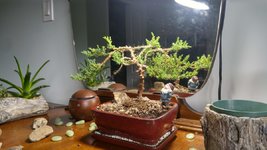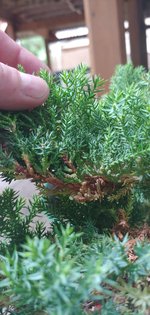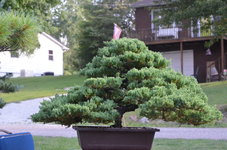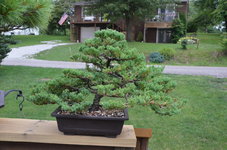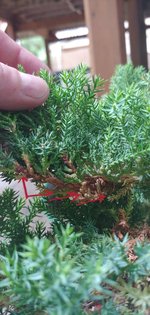Muddy
Seed
- Messages
- 2
- Reaction score
- 1
Hello,
First thank you for any help you can give!!
I'm a new member but have been lurking these forums for a lot of the information I obtained over the years. This is an epic hobby!! However I am having a problem beyond my knowledge and research is getting me no further.
I love this tree and really want to be one of those folks with his first tree still alive. The damage is still localized and there is healthy growth, but this dieback keeps spreading everyday. I'm not sure what information will be helpful so here it goes.
Conditions:
Location - Canada, South Ontario
Sun - 5 - 6 hours of direct sunlight per day (Outside, away from window)
Watering - Done by feel when soil is dry to just over 1 inch below the surface. Never been completely dry. Watered about once a week at 30C.
Temperature - Recent heatwave brought high humidity and 35C temperatures. But normally it's 30C during the afternoon 20-25C at night.
Fertilizer - Once per month using 10-15-10
Pruning - Butchered it once with bad info when I first bought it with no experience, I took it back to almost nothing. Been recovering for the last two years but has grown strong, never declining until now
Soil - It's organic soil - Blend of cactus soil and perlite (Know it's not ideal and should be inorganic but I didn't want to remove it since it appeared happy up until now)
Pests - I don't have a microscope but used white paper and a branch shake. Nothing fell off, no webbing on the plant, and no physical sign of spider mites, scale, or mealybug
Environmental - Possible wind damage? We had a major wind storm that partially uprooted the right side of the plant about two weeks ago. The tree is not anchored but I do shelter best I can during these events. First time it happened.
I caught it before the roots dried out. But perhaps it tore away feeders?
Let me know if additional information will help you. I really don't want to loose this tree so I do appreciate your time!!
Cheers and thank you for helping me understand the scenario!!




First thank you for any help you can give!!
I'm a new member but have been lurking these forums for a lot of the information I obtained over the years. This is an epic hobby!! However I am having a problem beyond my knowledge and research is getting me no further.
I love this tree and really want to be one of those folks with his first tree still alive. The damage is still localized and there is healthy growth, but this dieback keeps spreading everyday. I'm not sure what information will be helpful so here it goes.
Conditions:
Location - Canada, South Ontario
Sun - 5 - 6 hours of direct sunlight per day (Outside, away from window)
Watering - Done by feel when soil is dry to just over 1 inch below the surface. Never been completely dry. Watered about once a week at 30C.
Temperature - Recent heatwave brought high humidity and 35C temperatures. But normally it's 30C during the afternoon 20-25C at night.
Fertilizer - Once per month using 10-15-10
Pruning - Butchered it once with bad info when I first bought it with no experience, I took it back to almost nothing. Been recovering for the last two years but has grown strong, never declining until now
Soil - It's organic soil - Blend of cactus soil and perlite (Know it's not ideal and should be inorganic but I didn't want to remove it since it appeared happy up until now)
Pests - I don't have a microscope but used white paper and a branch shake. Nothing fell off, no webbing on the plant, and no physical sign of spider mites, scale, or mealybug
Environmental - Possible wind damage? We had a major wind storm that partially uprooted the right side of the plant about two weeks ago. The tree is not anchored but I do shelter best I can during these events. First time it happened.
I caught it before the roots dried out. But perhaps it tore away feeders?
Let me know if additional information will help you. I really don't want to loose this tree so I do appreciate your time!!
Cheers and thank you for helping me understand the scenario!!





